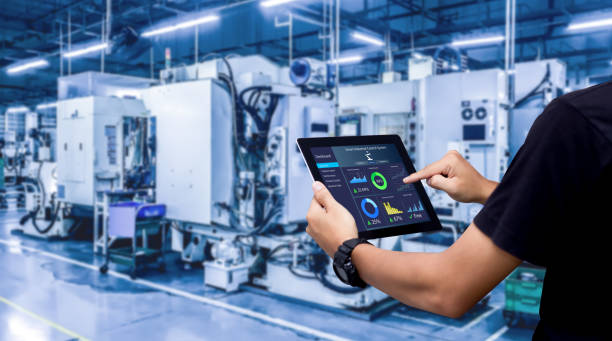Redefining Industrial Maintenance with Predictive Sound Analysis
Imagine walking through a bustling factory floor where machines hum in perfect harmony. Suddenly, a subtle change in pitch catches your ear. This seemingly insignificant anomaly could be the key to preventing a major breakdown. Welcome to the world of predictive sound analysis in industrial maintenance, where every whisper and whir tells a story.

Enter predictive sound analysis, a cutting-edge technology that combines advanced acoustics, machine learning, and big data analytics to revolutionize industrial maintenance. This innovative approach transforms the auditory landscape of factories into a rich source of actionable data, enabling proactive maintenance strategies and minimizing costly downtime.
The Science Behind the Sound
At its core, predictive sound analysis relies on sophisticated algorithms that can detect and interpret minute changes in the acoustic signatures of industrial equipment. These algorithms are trained on vast datasets of normal and abnormal machine sounds, allowing them to identify potential issues with remarkable accuracy.
The process begins with the strategic placement of high-sensitivity microphones throughout the facility. These sensors continuously capture audio data, which is then processed and analyzed in real-time. Advanced signal processing techniques filter out background noise and isolate the specific frequencies associated with each piece of equipment.
Machine learning models then compare the captured sounds against their extensive database of acoustic signatures. Any deviations from the expected patterns trigger alerts, allowing maintenance teams to investigate and address potential issues before they escalate into major problems.
From Reactive to Proactive: A Paradigm Shift
The implementation of predictive sound analysis marks a significant shift in industrial maintenance philosophy. Traditional maintenance approaches often fall into two categories: reactive (fix it when it breaks) or preventive (scheduled maintenance based on time or usage). While both have their merits, they also come with inherent inefficiencies and risks.
Predictive sound analysis enables a more refined, condition-based maintenance strategy. By continuously monitoring equipment health through acoustic data, maintenance can be performed precisely when needed – not too early, which wastes resources, and not too late, which risks equipment failure.
This proactive approach offers numerous benefits:
-
Reduced downtime: By addressing issues before they cause breakdowns, facilities can significantly minimize unplanned stoppages.
-
Cost savings: Timely interventions prevent minor issues from escalating into major, expensive repairs.
-
Extended equipment lifespan: Proper maintenance based on actual condition rather than arbitrary schedules can prolong the operational life of machinery.
-
Improved safety: Early detection of equipment abnormalities reduces the risk of catastrophic failures that could pose safety hazards.
Beyond the Factory Floor: Wider Applications
While predictive sound analysis has found its initial footing in manufacturing and heavy industry, its potential applications extend far beyond. Any sector that relies on mechanical equipment can benefit from this technology:
-
Transportation: Monitoring the sounds of engines, wheels, and other components in vehicles, trains, and aircraft for early detection of wear and tear.
-
Energy production: Analyzing acoustic signatures of turbines, generators, and other power plant equipment to optimize performance and prevent outages.
-
Healthcare: Applying sound analysis to medical devices and hospital infrastructure to ensure reliable operation and patient safety.
-
Agriculture: Monitoring the sounds of farming equipment and irrigation systems to maximize efficiency and minimize crop loss due to equipment failure.
As the technology continues to evolve, we can expect to see even more innovative applications across various industries.
Challenges and Future Directions
Despite its promising potential, predictive sound analysis is not without challenges. The complexity of industrial environments, with their multitude of overlapping sounds, can make accurate analysis difficult. Additionally, the technology requires significant upfront investment in sensors, computing infrastructure, and skilled personnel to interpret the data.
However, ongoing advancements in artificial intelligence and edge computing are addressing these challenges. Future iterations of the technology may incorporate:
-
Distributed edge processing: Analyzing sound data at the source to reduce latency and bandwidth requirements.
-
AI-powered acoustic modeling: Creating more sophisticated models that can better distinguish between normal variations and genuine anomalies.
-
Integration with other sensor data: Combining acoustic analysis with vibration, temperature, and other sensor inputs for a more comprehensive view of equipment health.
Amplifying Industrial Efficiency: Key Insights
-
Start small: Begin with a pilot project on critical equipment to demonstrate value before scaling up.
-
Invest in training: Equip your maintenance team with the skills to interpret and act on acoustic data effectively.
-
Establish baselines: Thoroughly document the normal acoustic signatures of your equipment for accurate comparisons.
-
Integrate with existing systems: Ensure your predictive sound analysis solution can communicate with your current maintenance management software.
-
Continuously refine: Regularly update your acoustic models with new data to improve accuracy over time.
As we look to the future of industrial operations, predictive sound analysis stands out as a powerful tool in the quest for operational excellence. By turning the cacophony of industry into a symphony of insights, this technology promises to reshape how we approach maintenance, efficiency, and reliability across sectors. The next time you hear the hum of machinery, remember: it’s not just noise – it’s a wealth of information waiting to be tapped.





